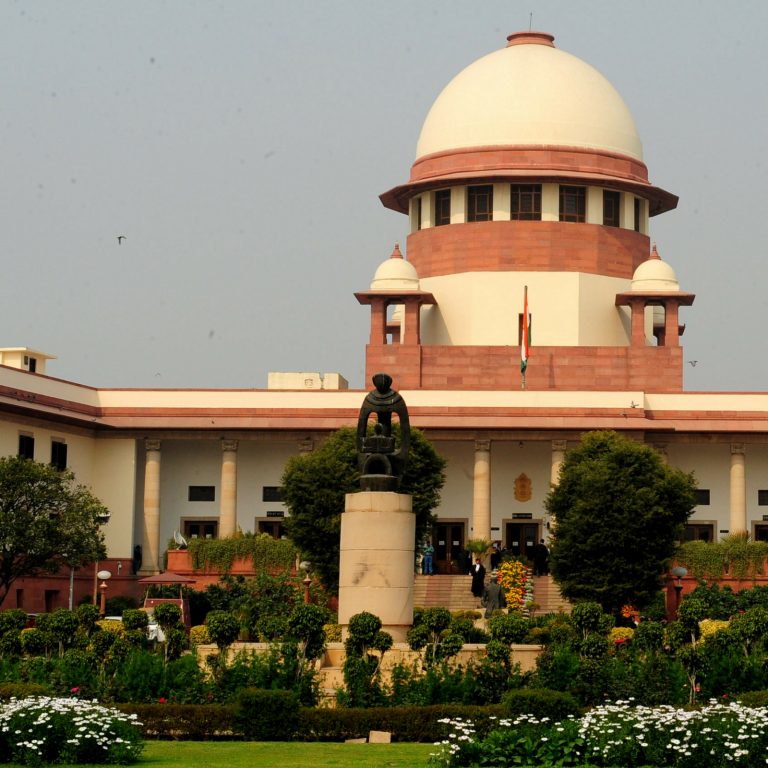 Dispatch is a platform promising zero transaction fees and a speed of tens of thousands of transactions per second (TPS). Is this platform a theoretical pipedream or worth a look? Find out more in this exclusive Merkle interview with Zane Witherspoon, co-founder and CTO of Dispatch Labs. The Merkle: Can you tell us briefly about Dispatch Labs and how you got involved? Zane Witherspoon: Dispatch Labs is a new chain built as a platform for data-driven DApps. I was organizing the San Francisco Ethereum meetups when I met Matt McGraw and Patrick Wickstrom for the first time. We started talking about
Dispatch is a platform promising zero transaction fees and a speed of tens of thousands of transactions per second (TPS). Is this platform a theoretical pipedream or worth a look? Find out more in this exclusive Merkle interview with Zane Witherspoon, co-founder and CTO of Dispatch Labs. The Merkle: Can you tell us briefly about Dispatch Labs and how you got involved? Zane Witherspoon: Dispatch Labs is a new chain built as a platform for data-driven DApps. I was organizing the San Francisco Ethereum meetups when I met Matt McGraw and Patrick Wickstrom for the first time. We started talking about

Dispatch is a platform promising zero transaction fees and a speed of tens of thousands of transactions per second (TPS). Is this platform a theoretical pipedream or worth a look? Find out more in this exclusive Merkle interview with Zane Witherspoon, co-founder and CTO of Dispatch Labs.
The Merkle: Can you tell us briefly about Dispatch Labs and how you got involved?
Zane Witherspoon: Dispatch Labs is a new chain built as a platform for data-driven DApps.
I was organizing the San Francisco Ethereum meetups when I met Matt McGraw and Patrick Wickstrom for the first time. We started talking about an idea of theirs for royalty leakage tracking using blockchain. It was probably the most boring thing you could do with such a new and exciting technology. We kept in touch, and started thinking about music. I’m a musician and Matt and I both have many artist friends, making us very familiar with the problems of artists and distribution costs.
We set out to make a content marketplace built on the blockchain, empowering artists to distribute their own music without middlemen taking a cut [of] their profits and bringing music to consumers for less. When we looked at platforms, we realized no blockchain could handle this quantity of data. That’s when we started working on building an underlying protocol and [it’s] how Dispatch Labs was born. A platform with speeds robust enough to support streaming music also had many other possible uses: AI, IoT, machine learning, streaming video, health records and data transfer, and more.
Both Matt and Patrick saw the bigger picture faster than I did, and as we built the platform, they brought up the idea of a consultancy. Patrick had spent years as a consultant at [PricewaterhouseCoopers] and Matt had helped many startups find major success, and [they] wanted to bring in people we could support as a consultancy and also introduce to our platform. I was so against it at first, but I couldn’t have been more wrong. We ended up forming a governing organization called The Bureau with Constellation Labs, a DAG protocol based on reusable smart contracts.
The Bureau became our innovation hub and governing organization, and our underlying protocols, Dispatch Labs and Constellation became the spokes. The Bureau lets us work with interesting blockchain projects, [supporting] their success as startups. In this structure, the Bureau builds out our connections, Constellation’s DAG works well at data intake, and Dispatch powers data collection and processing.

The Bureau at work inside Dispatch Labs’ San Francisco office
The Merkle: What kinds of partnerships does Dispatch have for getting new users and businesses on its platform? I saw you recently partnered with Utopi, offering a streaming video service.
Witherspoon: While we’re pretty blockchain-agnostic as far as how our Bureau clients develop their projects, many of them are excited to build on Dispatch because of the resources we can provide them and the influence they can have in the development of the protocol.
Nanovision is putting open medical data on the blockchain. This shared data would help to bring faster FDA approval for new prescription drugs. Nanovision also partnered with ARM processors to offer nanochip devices that could store your personal molecular health data on Dispatch.
Bucket seeks to remove coins from the fiat economy. Metal change like coins create a wasteful transportation cycle for companies to cash out at banks, and coin counter machines take a huge cut of consumers’ money for their service.
The Merkle: You came up with a unique protocol known as Delegated Asynchronous Proof of Stake. How is this different from traditional Proof of Stake, and why was it necessary?
Witherspoon: Traditional blockchains have a hard cap [on the number of] transactions per second. This means the number of transactions is always limited by the number of blocks per second and the number of transactions per block. DAGs are one solution, but they are hindered by the shared quantity of data needed to be stored. DAGs like Nano and IOTA require you to keep a copy of the chain, meaning each individual has their own chain and keeps track of everyone else’s transaction.
Our solution was to apply a hybrid decentralized solution like Delegated Proof of Stake (DPoS), with a smaller quorum of elected validators, to a DAG structure to prevent bottlenecking like we see on traditional blockchains. We DAG-ized DPoS, removing the TPS bottleneck. In Delegated Asynchronous Proof of Stake (DAPoS), the bottleneck becomes the validators themselves. So as validator algorithms and hardware get better, the TPS of the network can scale up with them.
The Merkle: What kind of security auditing are you doing to make sure the Dispatch platform works as intended?
Witherspoon: One of the markers of [the] immaturity of [the] crypto space is there’s virtually no Quality Assurance (QA) on any crypto project. We have a dedicated QA team in our engineering department focused on testing our product. We hired a team of brothers, Dennis and Dimitri Molchanenko, who invented Redwood HQ, one of the most popular QA frameworks used by the US Department of Defense and others. We’re working on our own QA, and trying to encourage the rest of the crypto community to start thinking about it early on in projects as well. We’re also planning on [having] outside code auditing closer to launch.
The Merkle: What’s the most exciting thing about working on new protocols and projects in crypto right now?
Witherspoon: I get to talk about technology and business a lot, but one of the things I’ve learned as a 21 year old CTO [is that] the tech is one thing, but so much of the time it’s the energy of people that’s the magic behind something. I know my career is young, and I constantly feel amazed and blessed to be on the founding team I am, and that Matt and Patrick have taken me under their wing. I love these guys.

 Sundays are usually contrarian days in the world of cryptocurrencies. During this time of the week, there is often price momentum which seemingly contradicts everything else for the past week. Today is no different, as all markets are rebounding after a few difficult days. This is a positive development for enthusiasts, although maintaining this momentum will not be easy. The Ethereum Price Rebounds Strongly It is evident this week has seen its ups and downs as far as all cryptocurrencies are concerned. All markets have lost significant value this week, but it seems a lot of losses are being recovered
Sundays are usually contrarian days in the world of cryptocurrencies. During this time of the week, there is often price momentum which seemingly contradicts everything else for the past week. Today is no different, as all markets are rebounding after a few difficult days. This is a positive development for enthusiasts, although maintaining this momentum will not be easy. The Ethereum Price Rebounds Strongly It is evident this week has seen its ups and downs as far as all cryptocurrencies are concerned. All markets have lost significant value this week, but it seems a lot of losses are being recovered
 China’s government is well known as a crypto hater, and its banishments and pronouncements are the stuff of wild market swings. That doesn’t mean, however, they’re not keeping close eye on decentralized currencies. In fact, according to recent press releases, Chinese authorities are set to publish regular monthly analysis of over two dozen crypto assets, […]
China’s government is well known as a crypto hater, and its banishments and pronouncements are the stuff of wild market swings. That doesn’t mean, however, they’re not keeping close eye on decentralized currencies. In fact, according to recent press releases, Chinese authorities are set to publish regular monthly analysis of over two dozen crypto assets, […]




 Just recently news.Bitcoin.com reported on traders who exchanged “significant” trade volume using the peer-to-peer platform, Localbitcoins, by receiving warnings to upload their identity before they could proceed trading. Now the Localbitcoins organization has updated its terms of service agreement which comes with a few new guidelines concerning ID verification and data retention. Also read: Markets Update: Cryptocurrencies […]
Just recently news.Bitcoin.com reported on traders who exchanged “significant” trade volume using the peer-to-peer platform, Localbitcoins, by receiving warnings to upload their identity before they could proceed trading. Now the Localbitcoins organization has updated its terms of service agreement which comes with a few new guidelines concerning ID verification and data retention. Also read: Markets Update: Cryptocurrencies […]


 Distributed ledger technology-based company IOTA is continuing to expand its business with the release of its highly anticipated ‘Project Q’. The project has been the subject of a great deal of speculation and interest in the cryptocurrency community after the leaders of IOTA began to allude to it in a series of conversations.
Distributed ledger technology-based company IOTA is continuing to expand its business with the release of its highly anticipated ‘Project Q’. The project has been the subject of a great deal of speculation and interest in the cryptocurrency community after the leaders of IOTA began to allude to it in a series of conversations. According to a team of Indian lawyers, the Supreme Court of India refused request for a temporary injunction against restrictions imposed on banks regarding cryptocurrency by the country’s central bank. The Reserve Bank of India (RBI) issued a circular essentially banning crypto services, which will remain in place at least until a formal hearing. Also […]
According to a team of Indian lawyers, the Supreme Court of India refused request for a temporary injunction against restrictions imposed on banks regarding cryptocurrency by the country’s central bank. The Reserve Bank of India (RBI) issued a circular essentially banning crypto services, which will remain in place at least until a formal hearing. Also […]


 The Eastman Kodak Co. will conduct a token sale for its long-awaited KODAKCoin beginning May 21. The sale will target accredited investors and aims to raise $50 million for the development of a blockchain platform. The New York-based company has already held a presale in which it raised $10 million from investors. The KODAKCoin will be the native digital asset for KODAKOne, a blockchain platform that aims to empower photographers by giving them greater control over image rights management. KODAKOne was developed by Wenn Digital, a Venice, California-based company in which Kodak has a minority ownership. Complying With Regulations Kodak’s ICO, which had been
The Eastman Kodak Co. will conduct a token sale for its long-awaited KODAKCoin beginning May 21. The sale will target accredited investors and aims to raise $50 million for the development of a blockchain platform. The New York-based company has already held a presale in which it raised $10 million from investors. The KODAKCoin will be the native digital asset for KODAKOne, a blockchain platform that aims to empower photographers by giving them greater control over image rights management. KODAKOne was developed by Wenn Digital, a Venice, California-based company in which Kodak has a minority ownership. Complying With Regulations Kodak’s ICO, which had been
 Nouriel ‘Dr. Doom’ Roubini calling cryptocurrency a scam, the mother of all bubbles, and an even bigger bubble than tulip mania (yes, he did) is no longer something new. Roubini has been vocal in his opposition to both Bitcoin, calling it a scam whose intrinsic value is zero; and the blockchain, terming it unnecessary and capable of being replaced by other technologies. He was recently at it again, this time using two platforms on the same day to call out cryptos, ICOs, and blockchains. ‘Centralization Is The Future, Cryptos Have No Place’ Roubini was one of the panelists at a roundtable discussion
Nouriel ‘Dr. Doom’ Roubini calling cryptocurrency a scam, the mother of all bubbles, and an even bigger bubble than tulip mania (yes, he did) is no longer something new. Roubini has been vocal in his opposition to both Bitcoin, calling it a scam whose intrinsic value is zero; and the blockchain, terming it unnecessary and capable of being replaced by other technologies. He was recently at it again, this time using two platforms on the same day to call out cryptos, ICOs, and blockchains. ‘Centralization Is The Future, Cryptos Have No Place’ Roubini was one of the panelists at a roundtable discussion
 Dispatch is a platform promising zero transaction fees and a speed of tens of thousands of transactions per second (TPS). Is this platform a theoretical pipedream or worth a look? Find out more in this exclusive Merkle interview with Zane Witherspoon, co-founder and CTO of Dispatch Labs. The Merkle: Can you tell us briefly about Dispatch Labs and how you got involved? Zane Witherspoon: Dispatch Labs is a new chain built as a platform for data-driven DApps. I was organizing the San Francisco Ethereum meetups when I met Matt McGraw and Patrick Wickstrom for the first time. We started talking about
Dispatch is a platform promising zero transaction fees and a speed of tens of thousands of transactions per second (TPS). Is this platform a theoretical pipedream or worth a look? Find out more in this exclusive Merkle interview with Zane Witherspoon, co-founder and CTO of Dispatch Labs. The Merkle: Can you tell us briefly about Dispatch Labs and how you got involved? Zane Witherspoon: Dispatch Labs is a new chain built as a platform for data-driven DApps. I was organizing the San Francisco Ethereum meetups when I met Matt McGraw and Patrick Wickstrom for the first time. We started talking about
